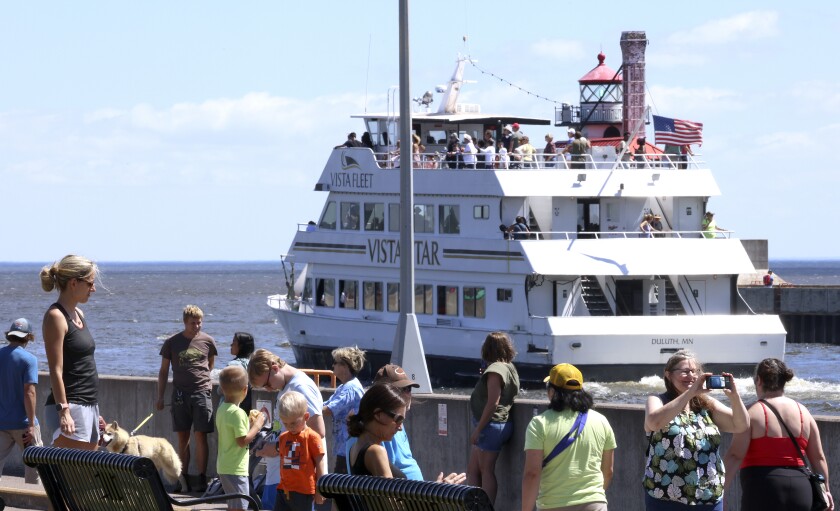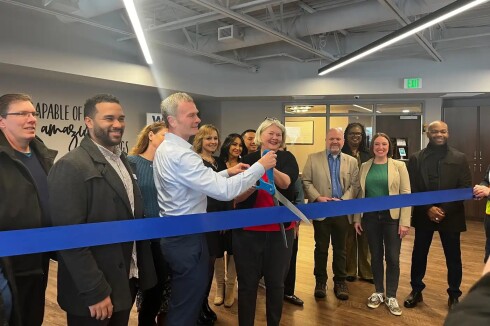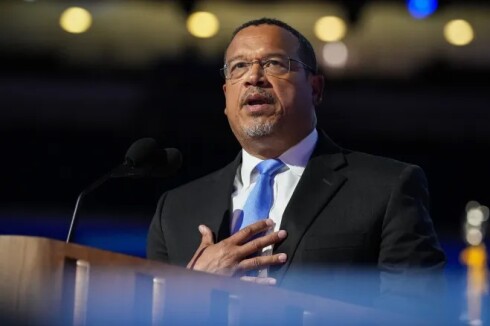SUPERIOR — Traffic patterns are expected to change when the Blatnik Bridge closes for reconstruction, likely in early 2027.
And that’s cause for concern for business owners and economic development professionals alike.
ADVERTISEMENT
And economic development professionals in Superior are working to develop solutions for businesses impacted by the change in traffic flow through the city.
“Overall, businesses are concerned about it,” said Kelly Peterson, director of the Superior Business Improvement District. “Northwest Outlet is certainly one of the businesses that benefits from Duluth traffic. They all do.”

While attending meetings about the planned reconstruction project, Peterson said she learned that Duluth business owners are also concerned with how traffic patterns may affect their businesses. That prompted her to create a “pollinator” group with Duluth business districts like Canal Park and Lincoln Park to share ideas on how to support and promote businesses in both communities. The group was scheduled to meet for the second time last week, she said.
A primary concern is that people will drive past and not want to stay and deal with traffic, Peterson said.
“We’re looking at ways we can support people once the traffic routes are for sure established,” she said.
Traffic engineers working to mitigate the anticipated traffic issues say that Superior won’t bear the full brunt of the traffic pattern changes, but the city will bear a large brunt of the diversion issues when about 35,000 cars per day are shifted to the Bong Bridge. While some of that traffic has already shifted because of the Twin Ports Interchange Project in Duluth, a 2018 study by the Wisconsin Department of Transportation looked at what happens in Superior when the Blatnik Bridge is closed.
It found that traffic increases significantly on Belknap Street, the main detour route, and increases on other east-west routes on Winter, North 21st and North 28th streets. To mitigate the higher traffic flow, engineers are recommending eliminating left turns at Banks and Ogden avenues on Belknap Street to keep traffic flowing.
ADVERTISEMENT
Jim Caesar, director of The Development Association, has been working to develop a program that could provide financial assistance to businesses that demonstrate a loss of revenue due to the Blatnik Bridge reconstruction. Last year, the Superior Days delegation lobbied in Madison to fund such a program and will continue to lobby when they head to Madison again next month.
Caesar said he worries 2027 will come and Superior is ill-prepared and businesses are failing.
“That’s my biggest concern,” Caesar said. “And I’ve said this hundreds of times — I’m more concerned about years two through five than I am about year one.”
Minnesota and Wisconsin departments of transportation officials expect the bridge to be closed for about four years, but the project is expected to begin in 2026 and wrap up in 2031.
Initially, people will still want to support local businesses, Caesar said, but he anticipates fatigue setting in with the hassle of traffic in subsequent years.
“It’s more than the project itself,” Caesar said. “It’s more than the timeline itself. It’s what happens after.”
The Development Association is working on a grant to bring on a consultant, Jenice Meyer, to help work through the issues.
ADVERTISEMENT
Caesar said they are also working on developing models of financial relief programs, like the COVID-19-era Paycheck Protection Program that provided forgivable loans to businesses affected by the pandemic. However, he said he would prefer some type of grant program so debt isn’t added to an already struggling business.
“Is there an app for this?” Jason Serck, city of Superior economic development, port and planning director, asked. He said communication is going to be key.
Peterson said she approached the city's Tourism Development Commission to find out more about what kind of plan they had for destination marketing during bridge construction. She found it terrifying that there was no marketing plan in place yet, she said.
“We’re missing a big piece there,” Peterson said. She said one of the things the BID is planning to do is resurrect the construction website that was used during the Tower Avenue and Belknap Street projects in a more user-friendly format to keep people informed.
“Some of the things that Jim has talked about ... is looking at other cities and communities, and how they handled similar types of closures,” Meyer said. “What can we learn from others? … What’s going to be the best way to help these businesses, not only survive, but are there opportunities for us to help them thrive during this bridge closure as well as after those five years?”























